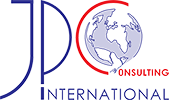With so many poorly led meetings taking place in businesses every week, employees have grown to dislike meetings and disengage from them. And what happens when meetings are considered a burden? Proper preparation does not take place, the chair person is expected to do all the hard work, many feel they are wasting otherwise productive time, millennials come prepared to multitask if they get bored and others get frustrated that everyone is given too much democratic speaking time that leads nowhere. If these are the prevalent sentiments, participants’ engagement in meetings will be low making any level of commitment and clarity regarding the next steps virtually impossible. Fortunately, there is usually one clear point of understanding that gets everyone entering something into their phones or tablets at the end of the meeting. However, this broadly supported point of understanding is usually the date and time of the next meeting!
Many different meeting formats are introduced to jolt employees into happy, dynamic, proactive and creative participation. Examples are daily stand-ups, huddles, weekly 1:1s, weekly team updates, fishbowl sessions, offsite brainstorming sessions and town hall debates. Added to this list are various online meeting formats. These different formats bring variation and a different energy level to meetings but they do not provide sustainable improvement unless they are built on different principles.
Companies tend to underestimate the powerful value of effective meetings as well as the excessive cost of ineffective meetings. Creating the right kind of meeting scene should be a top priority for companies as good meetings that meet relevant criteria are indispensable in complex environments. Innovation depends on collaboration. Meetings should be where ideas are generated, evaluated, fine-tuned and combined to become something no one could have achieved going solo. They typify an environment of experimentation which is a basic requirement for companies to become quicker, more resilient and proactive.
The right kind of meeting is based on good preparation, a shared purpose, an agreed method of communication and a closure that provides clarity regarding the next steps. Scrums are an example of effective meetings in which team members share updates on what they have done, will do next and possible hurdles. They come well prepared and leave with more clarity. But this is just one type of meeting companies need. For more creativity, a different level of brainstorming is necessary. These meetings are open dialogues in which team members debate on ideas each one brings to the meeting. Teams encourage, challenge, criticise, dismiss, improve and learn. This is the type of meeting people can look forward to. Coming unprepared feels bad and hampers being part of the dynamic progress taking place!
My advice it not to focus on giving meetings a regular make-over. This usually doesn’t bring the results one hopes for. It is likely that the foundations need some serious modernisation. Start to love the idea of valuable, high energy meetings. Project the energy that goes with that mindset. This will help you to move away from traditional ‘to-do-list’ sessions and to re-invent your meetings, change their contexts and purpose, and make them a highly effective cornerstone of innovative collaboration and progress. Inserting happy humour into these meetings will come more naturally too. Getting this right will reduce the number of meeting hours each week and make each meeting that takes place one you will love to lead and attend.
Janet Poot
International Business Consultant
Executive Coach
















